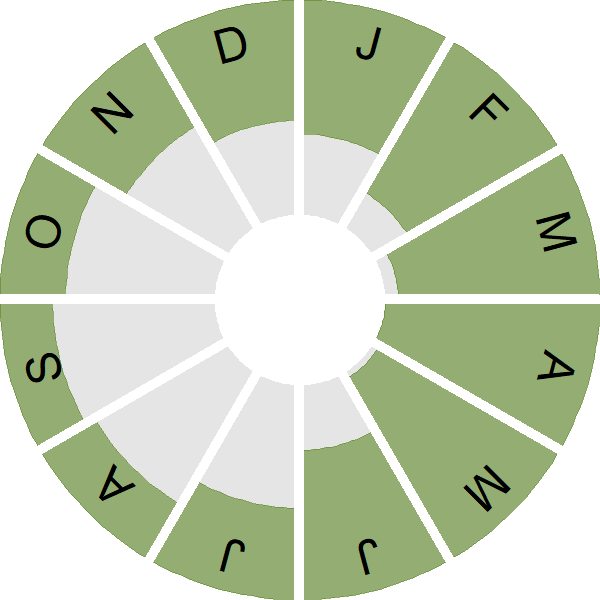Shelduck

Introduction
Between the size of most ducks and the larger geese, the Shelduck is easy to identify with its white, black and chestnut plumage and bright red bill.
In winter, Shelduck favour muddy estuaries and coastal marshes. Wetland Bird Survey data reveal the importance of north-west England for this species, with about ten thousand birds wintering on both the Dee and Mersey Estuaries. There has been a noticeable extension of range during the last 50 years.
The breeding range in Britain has also been extending inland over this period, with valley farmlands, pig fields and reservoirs are the habitats where Shelduck are most often encountered. This is a burrow-nesting species, so sandy soils and Rabbit warrens assist the birds in finding suitable nest sites.
- Our Trends Explorer gives you the latest insight into how this species' population is changing.

Key Stats
Identification
Songs and Calls
Call:
Flight call:
Status and Trends
Conservation Status
Population Change
Shelducks occurred on relatively few CBC plots, most of which were close to a coast or an estuary, and it is unclear how well the CBC trend represented the UK breeding population. The CBC showed a substantial increase from the mid 1960s until the early 1980s, some decrease during the 1980s, and stability during the 1990s, although the wide confidence intervals provide scope for other interpretations. Population increase was associated with expansion of range, measured as an additional 20% of occupied 10-km squares in Britain between 1968-72 and 1988-91 (Gibbons et al. 1993). The UK winter Shelduck population rose during the 1960s and 1970s, alongside the rise in breeding numbers, but then decreased from the mid 1990s, although a slight upturn has occurred in the last five years (WeBS: Frost et al. 2020). The BBS index is affected by occasional large counts, and therefore its confidence intervals are again relatively wide. BBS results show no clear population trend since 1994, but there has been further expansion of breeding population (Balmer et al. 2013). The species has increased across Europe since 1991 (PECBMS: PECBMS 2020a>).
Distribution
Shelducks wintering around the coastline favour muddy estuaries and coastal marshes. Inland, they utilise a range of sites including valley farmland, lakes, reservoirs and pig fields. The breeding distribution map shows birds to be well distributed around the lowland coastal fringe and at scattered inland locations in northern, central and southern England.
Occupied 10-km squares in UK
or view it on Bird Atlas Mapstore.
or view it on Bird Atlas Mapstore.
European Distribution Map
Distribution Change
The continued colonisation of inland breeding sites since the 1968–72 Breeding Atlas is the most striking change for the Shelduck and is also consistent with the change in range that has taken place in winter; increases of 34% and 17% in range size were recorded when compared with the 1968–72 Breeding Atlas and the 1981–84 Winter Atlas respectively.
Change in occupied 10-km squares in the UK
or view it on Bird Atlas Mapstore.
or view it on Bird Atlas Mapstore.
Seasonality
Shelducks are present throughout the year, though more often reported in winter and during spring migration.
Weekly pattern of occurrence
The graph shows when the species is present in the UK, with taller bars indicating a higher likelihood of encountering the species in appropriate regions and habitats.

Habitats
Breeding season habitats
Relative frequency by habitat
The graph shows the habitats occupied in the breeding season, with the most utilised habitats shown at the top. Bars of similar size indicate the species is equally likely to be recorded in those habitats.
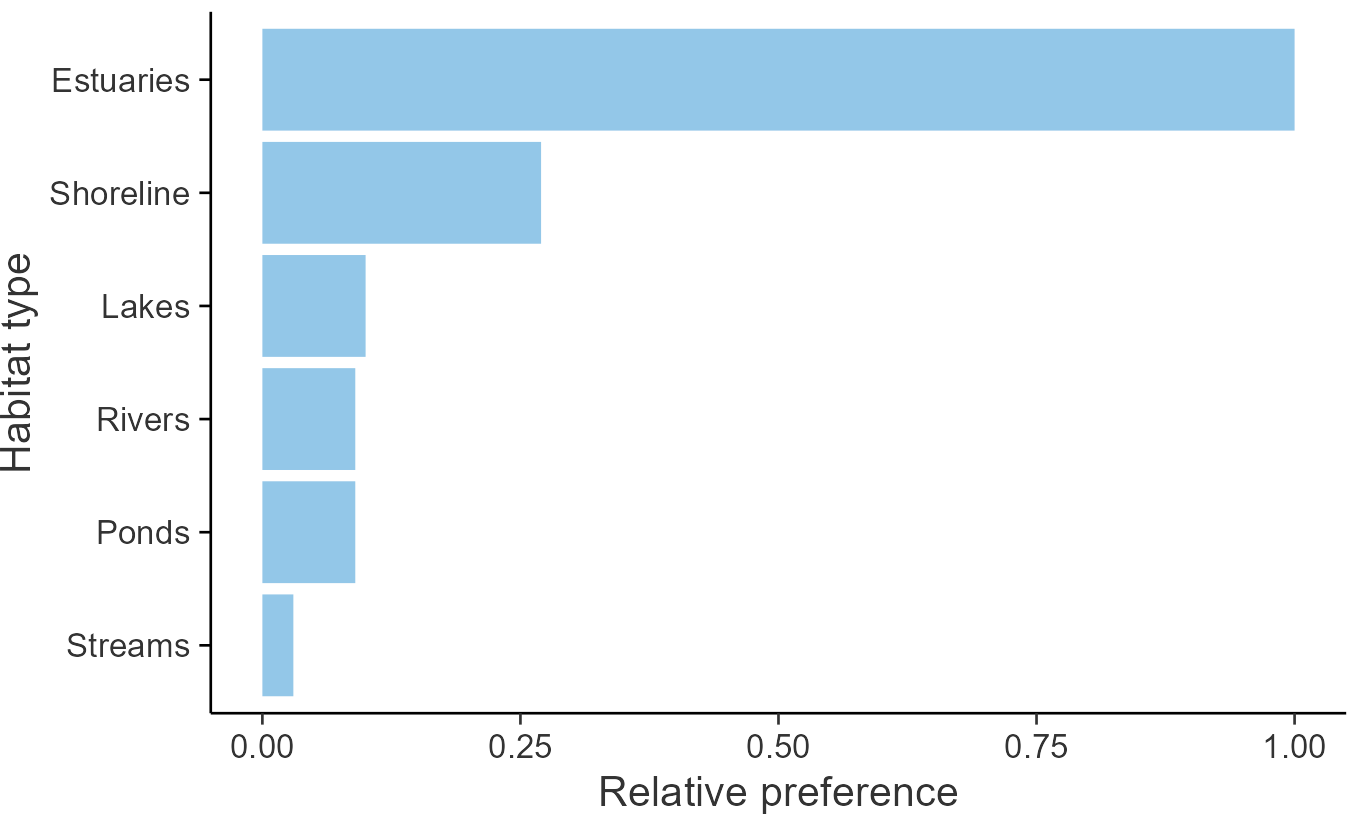
Movement
Britain & Ireland movement
Foreign locations of birds ringed or recovered in Britain & Ireland
Dots show the foreign destinations of birds ringed in Britain & Ireland, and the origins of birds ringed overseas that were subsequently recaptured, resighted or found dead in Britain & Ireland. Dot colours indicate the time of year that the species was present at the location.
- Winter (Nov-Feb)
- Spring (Mar-Apr)
- Summer (May-Jul)
- Autumn (Aug-Oct)

European movements
EuroBirdPortal uses birdwatcher's records, such as those logged in BirdTrack to map the flows of birds as they arrive and depart Europe. See maps for this species here.
The Eurasian-African Migration Atlas shows movements of individual birds ringed or recovered in Europe. See maps for this species here.
Biology
Productivity and Nesting
Nesting timing
Egg measurements
Clutch Size
Survival and Longevity
Survival is shown as the proportion of birds surviving from one year to the next and is derived from bird ringing data. It can also be used to estimate how long birds typically live.
View number ringed each year in the Online Ringing Report.
lifespan
Survival of adults
Survival of juveniles
Biometrics
Wing length and body weights are from live birds (source).
Wing length
Body weight
Ring Size
Classification, names and codes
Classification and Codes
- Order: Anseriformes
- Family: Anatidae
- Scientific name: Tadorna tadorna
- Authority: Linnaeus, 1758
- BTO 2-letter code: SU
- BTO 5-letter code: SHELD
- Euring code number: 1730
Alternate species names
- Catalan: ànec blanc
- Czech: husice lišcí
- Danish: Gravand
- Dutch: Bergeend
- Estonian: ristpart
- Finnish: ristisorsa
- French: Tadorne de Belon
- Gaelic: Cràdh-ghèadh
- German: Brandgans
- Hungarian: bütykös ásólúd
- Icelandic: Brandönd
- Irish: Seil-lacha
- Italian: Volpoca
- Latvian: Samsalas dižpile
- Lithuanian: paprastoji urvine antis
- Norwegian: Gravand
- Polish: ohar
- Portuguese: tadorna
- Slovak: kazarka pestrá
- Slovenian: duplinska kozarka
- Spanish: Tarro blanco
- Swedish: gravand
- Welsh: Hwyaden yr Eithin
Research
Causes of Change and Solutions
Causes of change
There is little good evidence available regarding the drivers of the breeding population change in this species in the UK.
Further information on causes of change
No further information is available.
Information about conservation actions
The recent trend for Shelduck is uncertain and hence it is unclear whether direct conservation action is currently required for this species in the UK. There is little specific research evidence relating to breeding requirements for the species, but it is likely that actions to maintain and improve availability and habitat quality in wetland habitats will benefit Shelduck. The species nests in underground holes or similar cavities (e.g. rabbit burrows) and the provision of artificial nest sites may help support nesting (BirdLife International)
Publications (4)
Long term changes in the abundance of benthic foraging birds in a restored wetland
Author: Mander, L., Scapin, L., Thaxter, C.B., Forster, R. & Burton, N.H.K.
Published: 2021
10.09.21
Papers
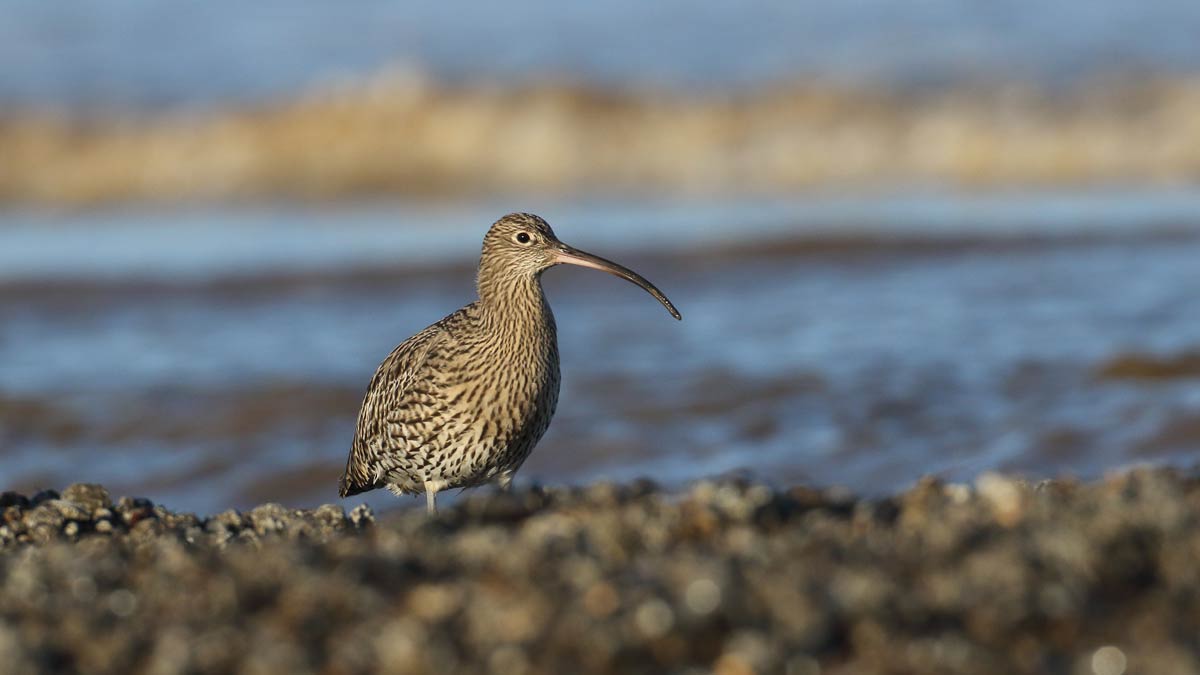
Migratory movements of British and Irish Common Shelduck Tadorna tadorna: a review of ringing data and a pilot tracking study to inform potential interactions with offshore wind farms in the North Sea
Author: Green, R.M.W., Burton, N.H.K. & Cook, A.S.C.P.
Published: 2021
New research from BTO has used GPS tracking to investigate how Shelduck interact with offshore wind turbines during migration across the North Sea.
16.03.21
Papers Ringing and Migration
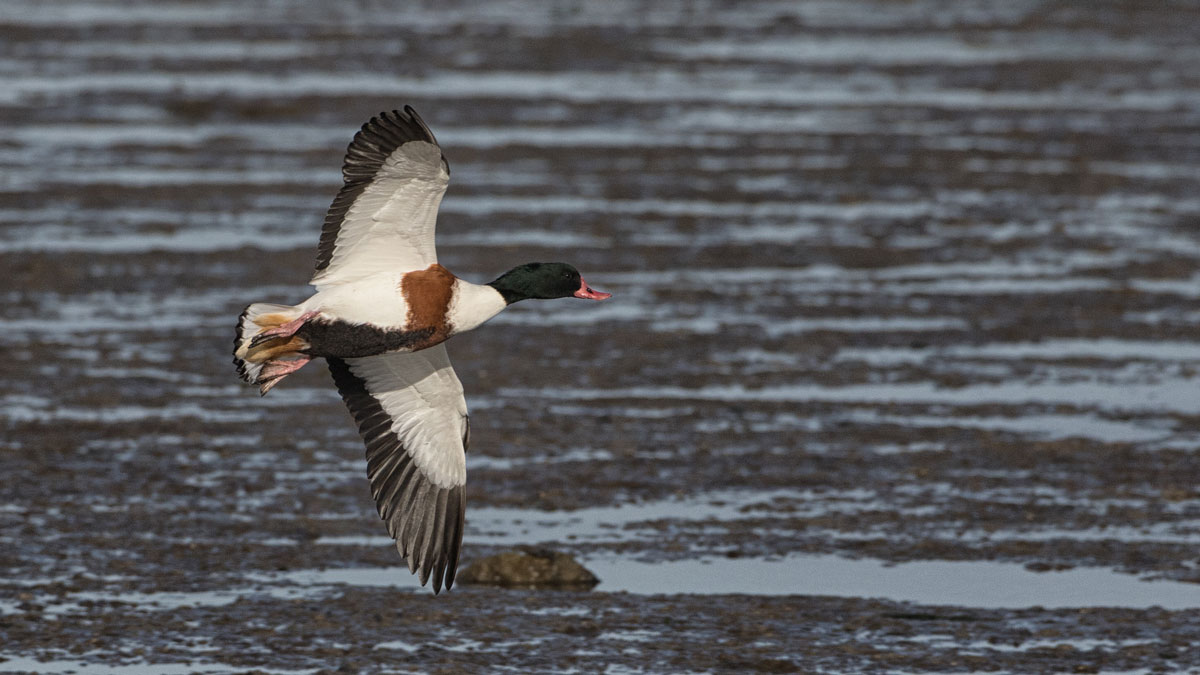
Consequences of population change for local abundance and site occupancy of wintering waterbirds
Author: Méndez, V., Gill, J.A., Alves, J.A., Burton, N.H.K. & Davies, R.G.
Published: 2017
Protected sites for birds are typically designated based on the site’s importance for the species that use it. For example, sites may be selected as Special Protection Areas (under the European Union Directive on the Conservation of Wild Birds) if they support more than 1% of a given national or international population of a species or an assemblage of over 20,000 waterbirds or seabirds. However, through the impacts of changing climates, habitat loss and invasive species, the way species use sites may change. As populations increase, abundance at existing sites may go up or new sites may be colonized. Similarly, as populations decrease, abundance at occupied sites may go down, or some sites may be abandoned. Determining how bird populations are spread across protected sites, and how changes in populations may affect this, is essential to making sure that they remain protected in the future.
20.09.17
Papers
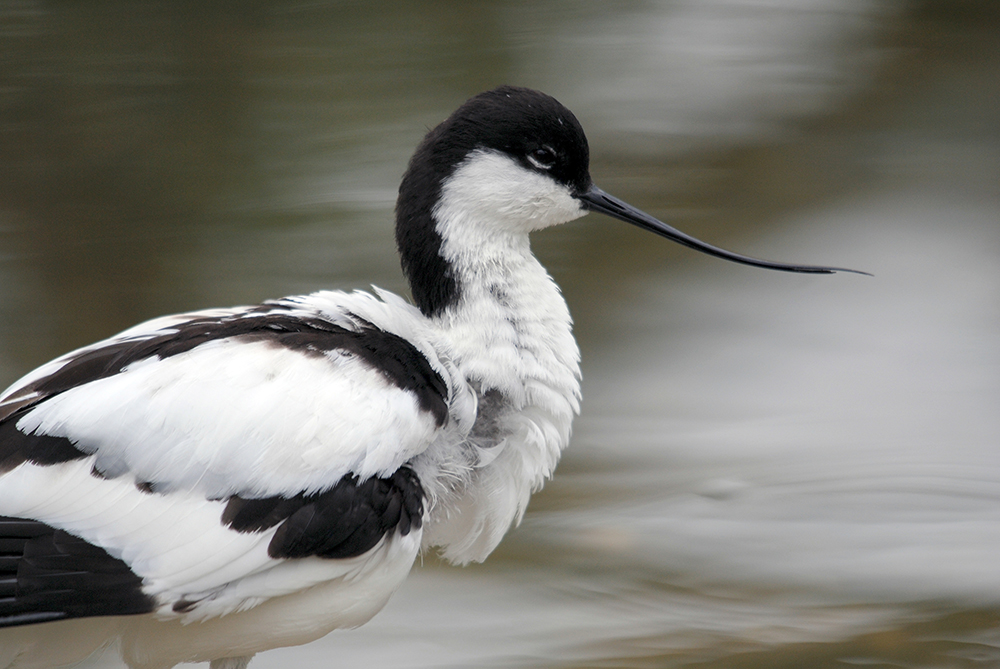
Low tide distribution of wintering waders and shelduck on the Severn Estuary in relation to the proposed tidal barrage
Author: Clark, N.A. & Prŷs-Jones, R.J.
Published: 1994
01.01.94
Papers

